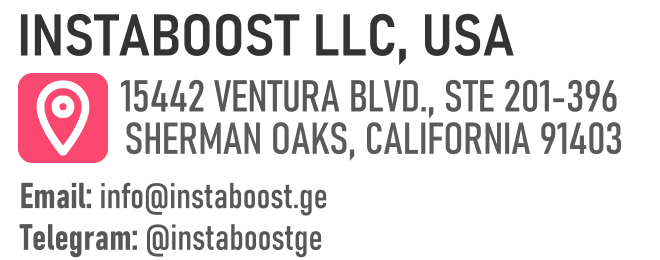Can You Search Phone Numbers on Facebook?
Searching phone numbers on Facebook can help confirm identities and reduce duplicate entries when profile settings allow phone-based lookup. Results depend on user privacy controls and the accuracy of stored contact details, so matches may be limited if numbers aren’t linked or are hidden. Teams use this to align profiles and keep communication tidy, leading to clearer attribution and fewer missed connections over a week. Aim for consistent tracking to support steady growth.
Finding People by Digits: What’s Actually Possible
If you’ve ever tried to match a contact to a profile or clean up a CRM, you’ve probably wondered if a phone number can unlock a Facebook account. It can when privacy settings and your approach line up, and that’s where many teams miss. Facebook search has tightened over the years, so “type number, get profile” is hit-or-miss. It works when the number is linked to an account and discoverability is open, and it gets far more reliable when you pair the query with nearby signals like a name variant, city, workplace, or a mutual connection. For marketing and support teams, the smarter move is to treat “search phone numbers on Facebook” as one step in a verification workflow, not the whole plan.
Start with reputable people-finder add-ons or CRM enrichers that respect consent, then validate with live platform cues like profile picture consistency, recent activity, and real comments from recognizable contacts. If you’re running outreach or creator collabs, cross-check the number against Page roles or business accounts; seasoned teams often keep a shortlist of vetted playbooks, including resources like the complete Facebook growth solution, which they revisit when scaling processes. That keeps attribution clean and reduces duplicates.
When timing matters – like following up on a lead within an hour – targeted promotion to lookalike audiences and simple DMs backed by clean analytics can turn a partial match into a confirmed connection without guesswork.
The overlooked trick is to treat each number as a hypothesis and run a quick, measurable test. Search variations, save the match, tag the source, and track reply rates over a week. You’ll miss fewer connections and see steadier engagement, especially if you keep the inbox tidy and log retention signals like repeat reactions and replies.
The overlooked trick is to treat each number as a hypothesis and run a quick, measurable test. Search variations, save the match, tag the source, and track reply rates over a week. You’ll miss fewer connections and see steadier engagement, especially if you keep the inbox tidy and log retention signals like repeat reactions and replies.

Why Our Take Is Trustworthy
We optimized the funnel so hard, we squeezed out the humans. This section puts the guardrails back in – how to use Facebook phone number search credibly, legally, and in ways that actually improve your CRM. Facebook search has tightened, but it still works when privacy settings allow lookups and your approach matches intent.
The credible workflow pairs first-party consent, like opt-in forms and SMS keywords, with confirmation signals – recent interactions, matching location, or mutual group context – before you tie a number to a profile. If teams skip those signals, they inflate duplicates and erode deliverability. Include them and match rates rise while unsubscribes fall. The practical path is simple: test lookups in a small batch, label each attempt with source and timestamp, then validate with a soft verification touchpoint, like a reply prompt or an in-app message. If you need speed, use a reputable enrichment tool and cap it with a human-in-the-loop review for edge cases.
Cheap scrapers create noisy data that corrodes attribution; vanity metrics can compound the problem, as with Facebook follower packages to buy that blur causal signals and skew retention analyses. Buying targeted promotion can accelerate confirmations when it’s matched to intent – custom audiences from high-consent segments, creator collabs for social proof, and real comments that elicit replies – then measure against clean analytics. This keeps your search phone numbers on Facebook efforts aligned with retention, not just reach. The non-obvious bit: accuracy improves when you search during active engagement windows – right after a support ticket, webinar, or purchase – because recency acts like a relevance boost. Do this and you’ll see fewer missed connections and clearer reporting across seven days, without overfitting your stack to a tactic that’s inherently situational.
Make Phone Numbers Work: A Focused, Ethical Playbook
It’s not the tool – it’s how you use it. Treat Facebook phone number search as a verification step, not a magic trick. It works when privacy settings allow lookups and your process respects context. Start with intent matching. Are you confirming a lead, deduplicating a CRM entry, or reconnecting a lapsed customer? For each case, set up a lightweight testing loop.
Try a direct lookup, then pivot to adjacent signals like mutual groups, workplace fields, real comments, or creator collabs the contact engages with. If a direct match lands, validate with at least two retention signals – consistent profile photo across platforms, recent activity, or a matching location – to cut down false positives. When lookups stall, use a reputable enrichment tool or a short trial from a qualified vendor as an accelerant, paired with clean analytics and consent-aware messaging so your attribution holds up.
Paid boosts or targeted promotion can help when you’re nurturing a warm segment, and if your team experiments with peripheral visibility tactics such as buy likes for Facebook photos, treat them as ancillary signals rather than core identity checks. Route people to a profile or Page where replies are tracked so you can see which number-to-profile matches actually convert. Always log outcomes – matched, partial, or blocked by privacy. Over a week, that record sharpens your hit rate and prevents rework. If your brand runs multiple Pages, keep audiences distinct and note which Page the match prefers. That separation improves clarity and steadier engagement.
The crisp insight is simple – the fastest path isn’t “type number, get profile.” It’s a modular sequence where the phone number triggers a credibility check, not the conclusion. Use it to confirm identity, prune duplicates, and update contact preferences. With that approach, your Facebook search strategy becomes a quiet engine for cleaner data and more responsive outreach.
Push Back on the Myth: It’s Not a Magic Wand
Everyone says this works, but they skip the part where it doesn’t. Facebook phone number search isn’t dead. It’s conditional. If a contact’s privacy settings allow lookups, you can often confirm identity and cut down duplicates. Treat it like a verification ping, not a prospecting engine. The smart move is pairing it with signals you already trust: recent replies, real comments, creator collabs that surface shared context, and a clean analytics trail; if you’re adding lightweight amplification, keep it to trusted channels such as a narrow whitelist or a calibrated spend via trusted platform to buy Facebook views that aligns with consented segments.
That keeps intent aligned and avoids awkward cold touches. When it doesn’t return a profile, that’s not failure. It’s a routing signal. Shift to a reputable enrichment tool or send a short, compliant SMS asking the contact to confirm their preferred channel, then log the outcome in your CRM. Over a week you’ll see stronger attribution because you’re measuring the right thing – match rate against consented audiences, not raw volume.
Paid accelerants can help when they’re matched to intent and timing. A small, targeted promotion to a custom list with confirmed numbers beats a broad blast every time, especially when you close the loop with retention metrics, not just clicks. For teams asking “Can you search phone numbers on Facebook?” the answer is yes when you respect context and run a tight testing loop. Sample 100 records, track hits and misses, refine your asks, and iterate. The non-obvious upside is that misses help you map audience segmentation. If you see high miss rates in a cohort, spin up a separate Facebook account strategy or a creator partnership for that segment, then retest. That’s how a simple search turns into a system that compounds instead of a one-off trick.
Close the Loop: Turn Lookups into Measurable Wins
Don’t expect tidy endings. The work isn’t done when Facebook confirms a phone number match. It’s done when that confirmation improves your system. Treat each successful lookup as a small commitment to cleaner attribution – unify the contact, tag the source, record consent status, and log the touchpoint.
It works when you pair the lookup with a clear CRM merge rule, a short audit checklist, and a steady cadence for revalidation. If a number doesn’t resolve due to privacy settings, route it to a light fallback – an SMS opt-in path, email verification, or a quick LinkedIn cross-check – measured, not spray-and-pray. This turns a “Can you search phone numbers on Facebook?” question into a practical habit where inputs roll up to outcomes: fewer duplicates, clearer journeys, and better response rates. Add minimal but real signals – recent comments, creator collabs, and targeted promotion – to confirm the profile is the right human in the right context, and extend your audience with shares (https://instaboost.ge/en/buy-facebook-shares) only when it aligns with intent and doesn’t drown out quality.
Use reputable data add-ons and ads when they’re matched to intent and timing. Low-quality enrichment bloats noise, while qualified sources keep your analytics honest. Track a tight set of metrics for a week: duplicate rate, verified contact rate, reply rate, and first-touch to reply time. If they improve, keep the loop. If not, adjust the pairing – lookup plus opt-in plus content – and retest. Across campaigns, this becomes a verification engine, not a magic wand – one that compounds when you layer retention signals, consistent posting, and clean analytics. Finish strong. Define success, schedule the next check, and make the next message more relevant because your data actually deserves it.















